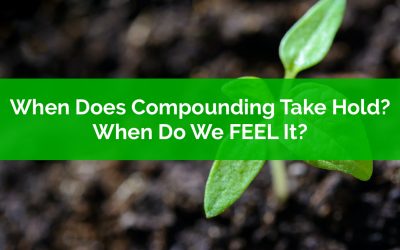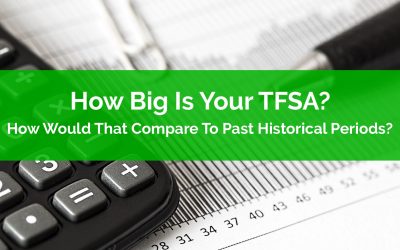Congratulations! You’re on the waitlist!
We will e-mail you before the bootcamp launches for an exclusive preview.
Check out our latest blog posts…
When Does Compounding Take Hold? When Do We FEEL It?
Technically compounding begins with the first dollar, but when does compounding exactly take hold, when do we really start to FEEL the effect of compounding?
Compounding is almost like magic. It turns even the smallest amount of money into millions if given enough time.
Ben Franklin bequeathed $2,000 to the cities of Boston and Philadelphia in his will BUT with the stipulation that they could not draw on the investments for 200-years. The original amount has compounded over 200-years from $2,000 to $6.5 million!
But do you have to wait for 200-years to feel the effect of compounding? Definitely not.
The effect of compounding can be SEEN almost immediately but to really FEEL the effect of compounding takes at least a few years, plus, as well see below, it also depends on the rate of investment return.
How Big Is Your TFSA? How Would That Compare To Past Historical Periods?
As of January 1st, everyone in Canada over the age of 18 has the chance to add another $6,000 to their TFSA. If you were 18 or older in 2009 your total original contribution room would be $75,500.
But that’s just contribution room, what about investment growth?
With investment growth where would a TFSA be? How much would it be worth? And how would that compare to other historical periods?
Let me preface this post by saying I don’t like to compare personal finances. Everyone’s path is different and it’s impossible to compare apples to apples. Even in the same financial situation everyone values money differently and therefore two people with the exact same income, assets, debts etc will have very different financial plans, part of the reason why financial planning is so important, and also so interesting.
That being said, in this post we’re going to compare hypothetical TFSA balances of today with those of the past. We’ve had a great “bull run” over the last 10+ years but what would it look like if we had different set of returns? What if we looked at the best periods and the worst periods in recent history to compare how the last 10+ years stacked up?
The TFSA has been around since 2009. Each year, once you reach age 18, you accumulate TFSA contribution room. In 2021, someone who was 18 or older in 2009 would have $75,500 in original contribution room. But with investment growth where would the actual balance be?
What do you think the top 5 and bottom 5 historical periods would be? And how do you think they’d compare with the last 10+ years?
Understanding TFSAs: The 8 Benefits (And 3 Drawbacks) of TFSAs
Tax-Free Savings Accounts (TFSAs) are relatively new. They were introduced just over 10 years ago in 2009. Even though they’ve only been around for a relatively short time they’re already the most used out of the major tax-sheltered accounts. There are over 5.5 million households in Canada that have an active TFSA account.
(Authors Note: I love it when people use their tax-sheltered accounts. Good tax planning is a key component of any financial plan and can add $100,000’s to your net worth)
The average usage rate for the TFSA is pretty impressive at 40.4%. This is relatively consistent across both age and income. The highest usage rate is in Ontario where over 45% of the households are using a TFSA. The median contribution to a TFSA in 2016 was $5,765.
All-in-all these are impressive numbers for a relatively new tax-sheltered account.
Given the high usage rate the TFSA must be pretty great, right?!?!
In this post we’ll cover exactly how a TFSAs works, the benefits of a TFSA, as well as some of the drawbacks of a TFSA.



